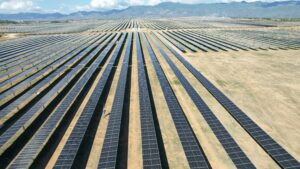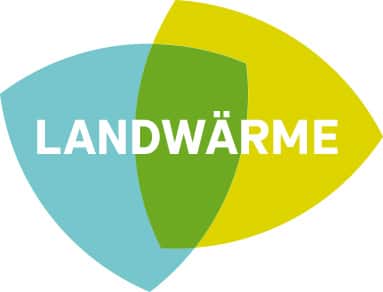Confronting Gender-Based Violence in the Energy Sector
Tomiris Amirova
30 October 2025
Welcome to the first installment of the new Lights on Women blog series, Powering Gender Equality, which explores intersections between gender and energy with contributions from diverse female experts who are part of the Lights on Women network.
Gender-based violence, like many issues related to gender equality, is often overlooked and underreported. Despite global advocacy, research, and public awareness efforts, violence against women and girls remains a pervasive and deeply rooted problem worldwide.
What is gender-based violence?
The term gender-based violence (GBV) refers to harmful acts directed at an individual on the basis of their gender. Women and girls are disproportionately affected, facing higher risks both online and offline. According to the World Health Organization, one in three women has experienced gender-based violence in their lifetime.
GBV stems from the structural inequalities present in most societies – rooted in power imbalances, discriminatory norms, and socio-economic disparities. There are different types of GBV – physical, sexual, psychological, and economic – and its manifestations range from physical assault, to rape, human trafficking, and femicide. UN Women reports that in 2023, more than 50,000 women were killed by intimate partners or family members – a staggering number that averages to one woman killed every 10 minutes.
To combat this global crisis, the United Nations General Assembly designated 25 November as the International Day for the Elimination of Violence Against Women to raise awareness about the issue. This date also marks the beginning of the annual 16 Days of Activism to End Gender-based Violence campaign, a global movement that runs until 10 December – Human Rights Day. The 2025 theme, UNiTE to End Digital Violence against All Women and Girls, focuses on a growing frontier of harm – technology-facilitated GBV.
Technology-facilitated gender-based violence
As our lives become increasingly intertwined with technology, digital spaces provide platforms for advocacy, expression, and solidarity, but they also become a battleground where women and girls face harassment, threats, and exploitation.
Digital or tech-facilitated gender-based violence includes a wide spectrum of abuse – from cyberstalking and image-based sexual abuse (such as so-called “revenge porn”) to doxing, hate speech, deepfake pornography, and coordinated smear campaigns. These harms often spill into real-world consequences, affecting victims’ mental health, professional lives, and personal safety.
Women working in the energy sector – a historically male-dominated field – continuously face backlash for presenting their work and expressing their opinions online. Women active on #energytwitter face repeated harassment and mansplaining from male peers, which have led to self-censorship and withdrawal from online engagement.
A broader investigation, focusing on the online abuse of climate scientists and its effects on climate action, found that women were more commonly targeted for their appearance and received more threats of sexual and physical violence, including death threats. Respondents reported significant emotional and professional impacts, including fear of damage to their professional reputation, anxiety, physical illness from stress, loss of productivity, and dread of work.
(Tech-facilitated) GBV in the energy sector
At the intersection of gender, environment, and conflict, the risks become more acute. Women affected by climate change, humanitarian crises, and conflicts are at a higher risk of gender-based violence, including tech-facilitated abuse. For example, limited internet access and digital literacy, compounded by social stigma, can make it difficult for women in vulnerable contexts to report abuse or seek support.
Digital violence extends beyond social media. In the workplace, women also face gendered abuse through professional channels. Instances have been reported of sexist messages sent via company chat systems, lewd comments in virtual meetings, and even surveillance through work devices. These abuses, while often dismissed as minor or isolated, contribute to a hostile work environment and reinforce existing gender inequities.
There is also growing concern around the misuse of connected devices – part of the broader Internet of Things (IoT) ecosystem – to perpetrate abuse. Smart meters, remote-controlled thermostats, and GPS-tracked utility vehicles are all tools that can be exploited for harassment or control. Research has shown that utility companies and energy providers are not always equipped to handle such risks. For example, poorly protected customer data or account access can inadvertently expose the location of a survivor to an abuser.
It is equally important to understand GBV within the context of large infrastructure projects and community-level interventions in the energy sector. Large-scale energy developments can generate unintended social consequences if gender-related risks are not integrated into project planning. For instance, the influx of temporary workers and the construction of new roads can increase demand for sex work, which may heighten risks of sex trafficking and the spread of sexually transmitted diseases, including HIV/AIDS. Conversely, improving energy access through initiatives like rural electrification or the distribution of clean and efficient cookstoves can have a protective effect, reducing women’s exposure to GBV by enhancing safety, health, and economic opportunities.
What can we do to combat GBV?
Strengthening accountability and enforcement. Governments, international organisations, and regulatory bodies must ensure that gender-based violence is meaningfully included in their agendas. Tech companies must be held accountable for the role their platforms play in enabling abuse, while energy regulators must account for gender-based violence, including addressing it in the just transition agenda.
Making digital platforms safer for women. Social media companies and technology firms should design their products with a gender perspective and safety in mind, including tools for easy reporting, better content moderation, and protections against algorithmic amplification of harmful content. Collaboration with women’s rights groups can help identify emerging risks and shape effective safety measures.
Promoting sector-specific safeguards. The energy industry, in particular, must adopt robust workplace harassment policies that extend to digital communication. Utilities and providers should receive training on gender-based risks and develop clear protocols to protect customer privacy, especially for survivors of domestic violence.
Empowering and supporting victims. Survivors must be at the centre of all responses. This includes access to legal aid, mental health support, and safe reporting mechanisms. Community support groups, women’s networks in energy, and peer alliances are essential to reducing isolation and amplifying voices.
Spreading awareness and challenging norms. Education campaigns, like the 16 Days of Activism, play a vital role in changing mindsets. Everyone can play a part: by challenging sexist comments, reporting abuse when seen, and creating inclusive, respectful spaces both online and offline.
As the digital world becomes more deeply embedded in our professional and personal lives, we must ensure it doesn’t replicate the same structural inequalities we’re fighting to dismantle. The energy transition must be not only green but also just – and that means confronting the gender-based violence that undermines women’s participation and leadership in the sector.
We at Lights on Women hope that this article contributes to the conversation. Learn more about the 16 Days of Activism 2025 and how you can get involved here.
Related contents
Stay in the know
Get the Lights on Women newsletter.








